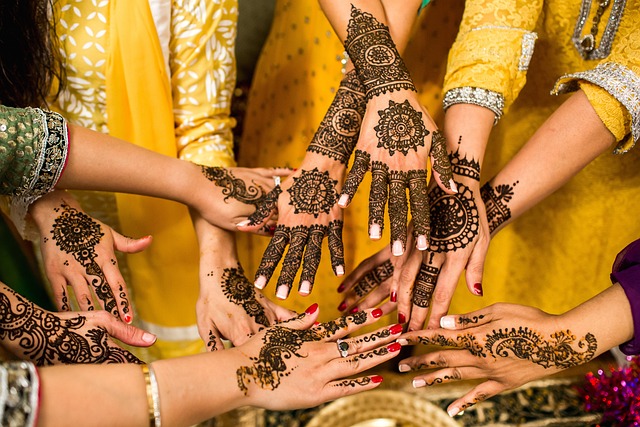5 Fascinating Beauty Rituals from Different Cultures

5 Fascinating Beauty Rituals from Different Cultures
Beauty rituals have long played a significant role in diverse cultures around the world. Passed down through generations, these time-honored practices not only enhance physical appearance but also serve as symbols of cultural identity and tradition. Each ritual carries unique historical significance, revealing a captivating tapestry of beliefs and aesthetics. In this article, we delve into five intriguing beauty rituals from different cultures that have stood the test of time and continue to inspire awe and fascination.
Geisha's Ancient Charm: Japan
Originating in the 17th century, the art of the Geisha in Japan remains one of the most iconic beauty rituals in history. Geishas are highly skilled performers trained in traditional arts like dance, music, and conversation. Their distinct appearance revolves around the concept of "maiko" or "geiko" beauty.
The Geisha's white-powdered face, called "oshiroi," acts as a canvas for their makeup artistry. The traditional application of the oshiroi involves layers of rice powder, followed by red and black accents to highlight facial features. This meticulous process not only evokes a sense of elegance but also serves as a symbol of Japan's rich cultural heritage.
Henna Adornments: India
Steeped in spirituality and tradition, henna artistry in India is a mesmerizing beauty ritual that dates back over 5,000 years. Henna, a natural dye derived from the Lawsonia inermis plant, is applied to the skin in intricate patterns during weddings and festive celebrations. The paste leaves behind stunning red-brown designs that last for several weeks.
Beyond its aesthetic appeal, henna holds deep symbolic meaning. The reddish hue represents love and prosperity, while the act of applying henna is believed to bring good luck and ward off evil spirits. As India's vibrant cultural tapestry continues to captivate the world, the allure of henna remains timeless.
Ancient Egyptian Secrets: Kohl Eyeliner
The ancient Egyptians are renowned for their sophisticated beauty practices, and the use of kohl eyeliner stands out as an enduring emblem of their elegance. Kohl, made from finely ground lead sulfide, galena, or other minerals, was applied around the eyes to accentuate their shape and protect them from the harsh desert sun.
Besides the aesthetic purpose, kohl eyeliner also had religious significance. It was believed to protect the wearer from the evil eye and, at the same time, invoke the protection of the gods. This beauty ritual continues to inspire modern makeup trends, and Kohl remains a popular cosmetic product worldwide.
Intricate Maori Tattoos: New Zealand
Maori culture in New Zealand is steeped in tradition, and their intricate tattooing practice, known as "Ta Moko," holds profound cultural importance. This permanent form of body art involves chiseling intricate patterns into the skin using traditional tools called "uhi." The tattoos are deeply symbolic, representing a person's identity, social status, and tribal affiliations.
Ta Moko is an arduous and sacred process, where the tattoo artist crafts unique designs for each individual, ensuring a personalized and meaningful expression of beauty. This captivating beauty ritual has gained global admiration for its stunning artistry and cultural significance.
Timeless Turkish Hamams
Hamams, also known as Turkish baths, have been an essential part of Turkey's cultural and social fabric for centuries. Beyond their cleansing properties, these public bathhouses serve as spaces for relaxation, socialization, and beauty treatments.
The ritual begins with a steamy session to open the pores and cleanse the skin. This is followed by vigorous scrubbing using a coarse mitt called "kese," which removes dead skin cells and rejuvenates the body. The experience concludes with a soothing massage and a refreshing dip in cold water.
Turkish hamams have evolved into luxurious spa experiences, attracting travelers from all over the world. The combination of cultural heritage, therapeutic benefits, and relaxation makes this beauty ritual an integral part of Turkish identity.
Conclusion
The world is replete with captivating beauty rituals, each reflecting the rich tapestry of its respective culture. From the ethereal grace of the Japanese Geisha to the spiritual significance of Indian henna artistry, and the deep symbolism of Maori tattoos, these practices continue to inspire and fascinate people around the globe. The timeless allure of kohl eyeliner in Egypt and the indulgence of Turkish hamams further exemplify the power of cultural heritage in shaping modern beauty trends.
Beyond their aesthetic appeal, these rituals carry deep meanings, connecting individuals to their roots, ancestors, and shared history. As we celebrate the diversity and uniqueness of these beauty practices, it is vital to recognize and respect the cultural significance they hold. In embracing these ancient traditions, we find ourselves drawn into the enigmatic world of beauty, where history and elegance intertwine in a harmonious dance across continents and generations.
